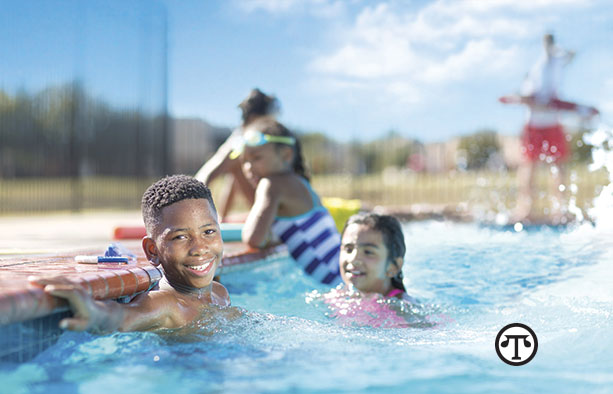
(NAPSI)—Cooling off in a pool, lake or ocean can be a refreshing idea—but only if you know how to avoid the dangers.
The Problem
Drowning is a leading cause of death in children under 14. One reason is that 70 percent of African-American and 60 percent of Hispanic children don’t know how to swim, the USA Swimming Foundation reports. Minority children are also less involved in competitive swimming when compared to their white peers, comprising only 1 percent of USA Swimming membership.
Some of the reasons include:
- Lack of Swimming Access. Facilities in traditionally underserved communities are few and far between and tend to be expensive.
- Cultural Constraints. Data shows there may be a legacy of fear, perpetuated through generations.
- Parental Perceptions. Adults who don’t swim may not know what needs to be done so that their children learn to swim safely.
An Answer
To help close the gap in swimming safety, the YMCA created Safety Around Water, a program that teaches children of all ages and backgrounds—and their parents—that water should be fun, not feared, as long as you know how to stay safe. This year, the Y awarded over 27,000 scholarships for free water safety lessons to children in underserved communities. The children learn fundamental water safety skills that include what to look for in a safe place to swim, what to do if they find themselves in the water unexpectedly, and how to swim a short distance on their front, roll over onto their back to rest, and then roll on their front to continue swimming to safety.
“The Y teaches more than 1 million children from all backgrounds invaluable water-safety and swim skills every year, and the disturbing statistics about youth drownings underscore the significance of this work,” said Kevin Washington, president and CEO of Y-USA. “We are giving swim scholarships to children in underserved communities who statistically are at greatest risk of drowning so they can learn to be safe in and around the water. The Y is committed to reaching more kids, saving more lives and changing the statistics.”
Water Safety
If you know how to stay safe in and around water, swimming can be a lifelong source of fun and exercise. Here are six things you should know:
- Never swim alone. Swim only when a lifeguard is on duty.
- Supervise children whenever they are in or near water. Whether it’s a bath, the ocean or anything in between, stay within arm’s reach of the child at all times.
- Don’t hold your breath. When swimming, children should avoid holding their breath for any length of time. This can lead directly to drowning and other severe physical side effects.
- Wear a life jacket. Novice and nonswimmers should wear Coast Guard−approved life jackets.
- Don’t jump in to save someone struggling in deep water. Even if you’re a great swimmer, you can be overpowered by a panicked person, pulling you underwater. The Y teaches the “reach, throw, don’t go” concept of using a long object to reach for the swimmer and pull him or her to safety.
- Enroll in water safety classes. The Y teaches fundamental water safety skills and how to react if you find yourself in water unexpectedly.
Learn More
Families interested in further information about enrolling a child in Safety Around Water or Y Swim Lessons should visit www.ymca.net/watersafety.
